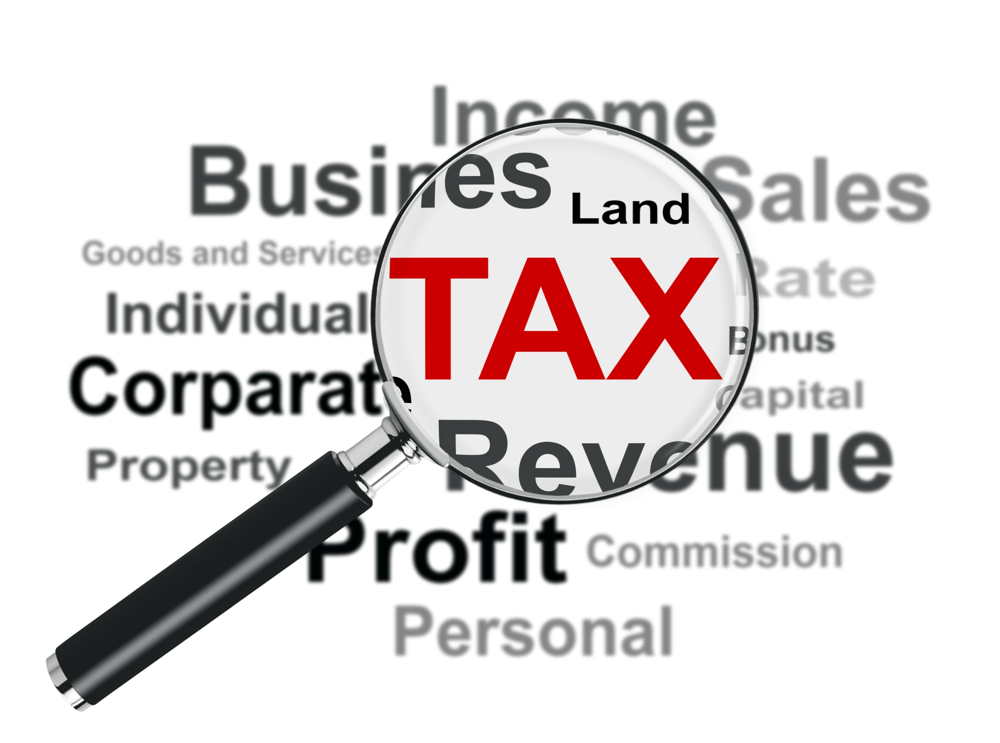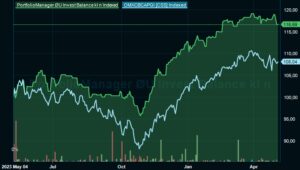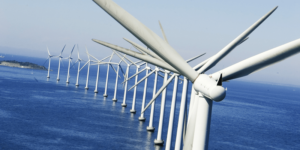Uddrag fra Unicredit, cheføkonom Erik Nielsen:
The G20 finance ministers and central bank governors will conclude their two-day meeting in Venice with an agreement on a global minimum 15% corporate tax rate, including a (modest) redistribution of revenue from multinationals according to where the underlying activity took place. 131 countries have already signed on to the OECD-brokered deal, and the rest – including a number of small tax havens like Ireland – will have until October to do so. As far as I can see, the deal is constructed in a way that will effectively spell the end of corporate tax havens, whether the holdouts join or not. And that’s good news.
The G20 has also move forward on the coordination of climate change policies as well as on the fight against the pandemic, including help to vaccinate people in EM, and – hopefully – some sort of global health investment set-up to deal with future pandemics. And, of course, in the middle of it all, this afternoon, Matteo Berrettini, the first Italian in a Wimbledon final, will try to prevent legendary Novak Djokovic from claiming his sixth title – and tonight, Italy and England meet in the (delayed) Euro 2020 final at Wembley.
Beyond all the theatrics, football is (usually) a beautiful game of small margins, a bit of luck and all that, but in my opinion we have the two best teams of the tournament in todays’ final, so that’s good news (with my apologies to everyone who thinks differently…) I hope the outcome of tonight’s much anticipated conclusion of a very fine, if delayed, tournament will be more exciting than Thursday’s also highly anticipated conclusion of the ECB’s (also fine but delayed) Strategy Review. Thursday’s news from Frankfurt was broadly as expected – and yet disappointing. In today’s note I’ll discuss:
■ The ECB’s new strategy: The disappointment, the worrying central outlook – and the (distant) hope.
■ The flat ECB strategy raises the bar for fiscal policy, for which the 2022 budgets and the future shape of the EU’s fiscal rules will be key. There’ll be no clarity on EU fiscal rules until we have the next German government in place.
I’ll discuss the outlook for German politics. 1. The ECB’s new strategy: On balance: A disappointment leaving us with a worrying central outlook – and only a little hope. I trust you are aware of the ECB’s new strategy, as announced on Thursday: The night before, the Governing Council had agreed unanimously to change the inflation target to 2% (instead of “below but close to 2%”) “over the medium term”, to make it explicitly symmetric (i.e., they are equally committed to fight under- and overshoots) and to include “the costs related to owneroccupied housing in the HICP”. They also pledged to play a more direct role in supporting environmentally-friendly policies, including via its asset purchases and the collateral framework.
The ECB clarified, “The flexibility of the medium-term orientation takes into account that the appropriate monetary policy response to a deviation of inflation from the target is context-specific and depends on the origin, magnitude and persistence of the deviation. It also allows the Governing Council … to cater for other considerations relevant to the pursuit of price stability.” Specifically, “To maintain the symmetry of its inflation target, the Governing Council recognizes the importance of taking into account the implications of the effective lower bound. In particular, when the economy is close to the lower bound, this requires especially forceful or persistent monetary policy measures to avoid negative deviations from the inflation target becoming entrenched.
This may also imply a transitory period in which inflation is moderately above target.” All in all, it was broadly as expected – but disappointing. That my expectation was this low is a simple reflection of the political necessity that the strategy review needed unanimous backing at the Governing Council, and that – by definition – means that the lowest common denominator rules. On balance, this moves ECB policies toward the hawkish side. Remember, Draghi led the ECB from the front he believed in, which left a hawkish minority increasingly frustrated – and vocal in what, intentionally or not, fueled a destructive media and political narrative in some member states.
When Lagarde took over in 2019, she made peace with the hawks her first and most important priority. As I wrote at the time, this would – by necessity – lead to a somewhat more hawkish stance of policy. It didn’t come to fruition, however, because of the pandemic, which brought with it the undisputed need for extraordinary action. Now the strategy, which almost certainly tilts the ECB back to the intended pre-pandemic stance, has been agreed on, and the battle moves to the unwinding of PEPP…. All rather predictable, but I had hoped for better:
Most importantly, I find it incredible that the review did not include a deep analysis of the reasons why the inflation target has been missed for the past roughly ten years. And without that, there was no indication how the new strategy will make it possible to achieve the (marginally revised) target. (As my colleague, Marco Valli, has pointed out, the inclusion of owner-occupied housing costs in the HICP basket would have lifted headline inflation by 0.1-0.2pp per year over the last decade, basically accounting for the difference between the old 1.7%-1.9% target and the new 2.0%.) Former ECB Director General for Markets, now Bruegel Senior Fellow, Francesco Papadia tweeted ever so succinctly: “I have no issue with the answers the ECB gives in its strategy review, my problem is with the questions it did not address: why did it fail its objective for a decade, notwithstanding brave action? Can a central bank control the rate of inflation? Do they have additional tools?”
It is, of course, far from clear that the ECB could have achieved the target on its own during this past decade, given the structural and fiscal impediments – unless they had employed helicopter-money (with the risks stemming from that). But, as its very core, these issues should have been discussed and evaluated in the review. And the new strategy should have reflected those conclusions if the ECB had any hope of persuading the population and markets that the new strategy will work better than the old one did in terms of delivering the ECB’s primary objective of price stability.
As you may recall, I discussed these issues in some details a few weeks ago. I argued that fiscal policy needs to play a stronger role in bringing inflation back to its target, which will then empower monetary policy, a rather uncontroversial view. Until that happens, monetary policy needs to accept its secondary – or supportive – role. The best way of doing so would be by introducing temporary yield curve control – to be automatically changed into inflation targeting when the inflation rate has settled around the desired level. Such a policy would have to be articulated explicitly in order to help form inflation expectations.
Indeed, I would argue that the ECB’s insistence on its definition of symmetry and possibility of overshooting only as a consequence of fighting the lower zero bound – as opposed to the Fed’s explicit average target over a period of time and the desire to overshoot – will likely dampen inflation expectations in Europe, relative to the US – making the ECB’s job even harder. My note from early June on what the ECB’s Strategy Review “should” have concluded is here, in case of interest: Sunday Wrap – 6 June 2021 As you’ll also conclude from my June note, my disappointment with the outcome of the Review goes further than the primary issue of how to restore the credibility of inflation targeting.
I’m also disappointed that the ECB decided to continue its reliance on external credit rating agencies to inform its operational policies across its daily life – and (presumably) to continued its willingness to waive those rules whenever they bite in a (politically) inconvenient way. I feel very strongly that this reliance for key monetary policy operational aspects on external, numerated, opinions by four private for-profit (non-eurozone based) companies is troublesome in the extreme. I’m open to persuasion, but my conclusion is that the ECB is using this set-up to hide from (admittedly difficult) responsibility.
Damaging nonetheless. I’m also troubled by the introduction of additional uncertainty (for at least some years) with respect to the inflation target – practically understandable, operationally and communication-wise problematic. To be clear, the change from “below but close 11 July 2021 Macro Research Chief Economist´s Comment UniCredit Research page 3 See last pages for disclaimer. to 2%” to 2% with symmetric commitment to get there is a welcome move to provide simplicity and clarity. But at the same time, for the next few years, the 2% inflation target will be a lot less clear than desirable because of explicit – but unquantified – concerns about owner-occupied housing and climate issues.
One would hope that Eurostat quickly manages to create a revised inflation index that includes owner-occupied housing, and that the ECB quickly decides how to evaluate companies on the new climate change parameters for collateral, etc., so that the inflation target becomes clearly identifiable. But realistically, this will easily take a couple of years – or about half the time until the likely next Strategy Review is conducted in 2025. But then again, the chance we’ll get to 2% on a sustained basis within the next couple of years is, in my view, extremely unlikely. And the reason is quite clear:
Within the next six months, the ECB will move towards tapering the PEPP, while talking up forward guidance and making some adjustments to the APP. But unless Lagarde accepts a major (public) dispute with the hawks, the net effect will be a monetary tightening even though the inflation target remains out of reach in the forecast. The question is whether the rest of the Governing Council now – with the new Strategy’s commitment to 2% – will insist on a policy mix and expanded stimulus to make 2% inflation, on a sustained basis within the forecasting period, the ECB’s central forecast.
I think the majority is there, but whether they’ll threaten a public row, like the hawks did, is unknown. I know that it’ll take a lot on the policy side to reliably forecast inflation back at 2% within the next couple of years, but if not, what credibility should one then assign to the new strategy? This is the only important question to be asked at the press conference after the next Governing Council meeting on 22 July! With that, I’ll move on from this topic of recent days’ multiple skype-calls to (one of the key) topics of the chats at my cafe here in Berlin’s Mitte, namely German politics. And as noted above, with the ECB almost certainly staying on its backfoot, fiscal policy has to step up, and that’ll have to come via ambitious 2022 budgets aimed at closing the output gaps, and an informed growth friendly revision to the fiscal rules.
The latter will be a decision largely dependent on the outcome of the German election on 26 September and the subsequent formation of a new coalition government. 2. The German election and what it may mean for German fiscal policy, debt brake and EU’s fiscal rules. Germany goes to the polls on 26 September to elect a new Bundestag, and with that a new government. With Angela Merkel retiring, Germany will also get a new chancellor after her 16-year rule. Beyond fiscal policies (and the politics of the “Schwarze Null”), the next government coalition will have to decide whether to try and push through a revision of the constitutional debt brake – and if not, how to navigate the road back to the deficits determined by the debt brake. To remind you, the German (constitutional) debt brake stipulates a structural public budget deficit of maximum 0.35% of GDP.
Structural means that it can deviate due to the business cycles, but more fundamental exemptions can also be granted (by a simple, but absolute, majority of elected deputies in the Bundestag, a so-called “chancellor majority”) in times of natural disaster and the like, e.g., the pandemic. Needless to say, anything but a very gradual strategy back to 0.35% of GDP deficit (from this year’s 6.0%, declining to about 2.7% next year) would entail a substantial fiscal tightening – although somewhat less so than what meets the eye because of the roughly 1% of GDP financial reserve fund which surely will be used to shoulder some of the burden.
Whichever way the discussion on the German debt brake goes will almost certainly inform the German stance on the EU’s fiscal rules, presently suspended until 2023 – which means that the real debate on the shape of the future EU fiscal rules will get under way later this year. From a European perspective, this may turn out to be the single most important consequence of the German election – after all, the prospect of outright anti-EU voices gaining power in Germany remain practically inexistent, as does the prospect of voices committed to a European leap forward.
On the latest poll-of-polls by Politico, CDU/CSU stand to get 29% of the votes (down from 32.9% at the election four years ago), followed by the Greens at 19% (up from 8.9%), SPD at 16% (down from 20.5%), FDP at 12% (up from 10.7%), AfD at 10% (down from12.6%) and Die Linke at 7% (down from 9.2%). Yesterday’s weekly poll by INSA for BILD am Sonntag has CDU/CSU at 28%, the Greens and SPD both 17%, FDP at 12%, AfD at 11% and the Linke at 8%. You will not be surprised to read that I take comfort in seeing the two extreme parties losing votes. The big news these past six months has been the roller-coaster for CDU and the Greens, bringing the CDU/CSU coalition from about 35% in February to 25% in May and then – with the messy leadership contest settled – back to around 29%.
Meanwhile, the Greens saw their support jump on the back of selecting Annalena Baerbock as their chancellor candidate from a little less than 20% in February to looking like the biggest party in May with 26%. Then followed a number of silly (and embarrassing) mistakes by Baerbock, which fueled what my musician neighbor here in Berlin calls a concerted character assassination of her by the majority of German media, and the Greens dropped back below 20%. A government coalition of CDU/CSU and the Greens (“black-green”) seems currently the only feasible constellation in which only two parties can command an absolute majority.
If that doesn’t work out (I suspect the key issues will be between the Greens and CDU’s right wing, rather than with CSU, and how CDU/CSU chancellor candidate Armin Laschet handles this in his obvious aim at the chancellorship), a number of three-party coalitions could also materialize, although not easy to negotiate either. Examples include a so-called “traffic-light coalition” (green, yellow, red) of the Greens, FDP and SPD, or – if this becomes too compromising for FDP (still smarting from their miserable negotiation strategy in 2017), maybe a “Jamaica coalition” (black-yellow-green) consisting of CDU/CSU, FDP and Greens. (One could also imagine a further recovery for SPD which would make another grand coalition with CDU/CSU statistically possible, but I would be very surprised if SPD would agree to yet another one of those.)
In addition to what the final outcome of the election will be – and two months is a long time in an election campaign – I suspect it’ll come down to the power of the two realistically possible chancellor candidates, Laschet and Baerbock, over their parties and policies in terms of driving the necessary compromises that will get them into the Washing Machine (for non-Berliners, that is the chancellor building!) Now to the German debt brake: It was phased out last year because of the pandemic but it’ll become effective again in 2023 according to the plans of the incumbent government.
But – again – it’ll depend on the outcome of the general election. In a nutshell, the CDU/CSU election program rejects any change to the debt brake and wants a quick return to a balanced public budget. The same policy has been advocated by FDP. SPD also claims a commitment to a return to the debt brake, although it is less prominently displayed than for CDU/CSU and FDP. In contrast, the Greens favor a change of the debt brake in the constitution by introducing a golden rule, according to which higher public deficits would be possible to finance public investment. As such, analytically, the Greens are in line with the (for me still too modest) recommendations of the European Fiscal Board’s recommendation for the EU fiscal rules. Party political views on the German debt brake are mirrored in similar stances on the EU fiscal rules: The CDU/CSU and the FDP want a swift return to the rules of the Stability and Growth Pact and a strict sanctioning of violations.
The only deviation between the stated domestic policy and EU policy is for the SPD, which commits to the German debt brake, but argues for a revision of the EU fiscal rules. As my colleague, our chief German economist, Andreas Rees, has argued, regardless of the election outcome, a change, let alone an abolition of the German debt brake, is unlikely. It would require a two-thirds majority both in the Bundestag and Bundesrat – and that’s just not where the German public is going… That said, some creative accounting is not out of the question. In May, Laschet flew a trial balloon on an extra-budgetary fund of mixed public and private resources, a so-called “Germany Fund”.
It’s based on a proposal made by two German economic think tanks, including the German Economic Institute, whose director, Michael Hüther, is also a member of Laschet’s Assembly of Experts which advised him during the COVID-19 crisis in North-Rhine Westphalia. That original proposal for the Germany Fund foresees additional public investment of roughly EUR 450bn over 10 years. It includes spending on infrastructure, education and climate protection. (My understanding is that an extra-budgetary fund would not be permissible under the debt brake, but the authors of the original proposal outlined a legal construction which presumably would make it legal.)
Of course, the proposal immediately triggered political opposition, particularly from conservatives in CDU/CSU as well as from FDP, and Laschet then walked it back in an interview. Yet, as Andreas has pointed out, it could become a bridge-builder to the Greens, who have advocated a spending plan of EUR 500bn for the next ten years. If you want more on German politics and policy prospects, don’t hesitate: Reach out – to me, or even better to Andreas Rees in Frankfurt (which is not Berlin…) Either way, the way the next German government will deal with the debt brake will almost certainly inform us about the next government’s stance on the EU’s fiscal rules; after all, they are two sides of the same coin. I want to be optimistic, and I’m encouraged by the general European fiscal narrative of not withdrawing fiscal stimulus prematurely, as well as a greater appreciation in the finance ministries (and the Commission) that getting GDP back to prepandemic levels is no more than a step on the road back to normality.
That makes me moderately optimistic about the 2022 budgets around Europe. In contrast, on present information, it’s hard not to conclude that the European fiscal policy strategy beyond 2022 – as it translates from the fiscal rules in Germany and the EU – is more likely to follow the ECB down a road of excessive caution which, unfortunately, spells several years of sub-optimal growth, rather than a forward looking growth approach. The “need for stability” is still a winner in most European policy debates. But can you have stability while also fostering the dynamism needed for the green and digital revolution? I worry that most of our policymakers are not brave enough. And now – to an afternoon of tennis watching with champagne and strawberries in absentia, followed by football watching tonight with beers and hotdogs at the local football club. It’ll be a lot of fun. I pledge to do what I can for the recovery of the economy in this community! Best Erik

















